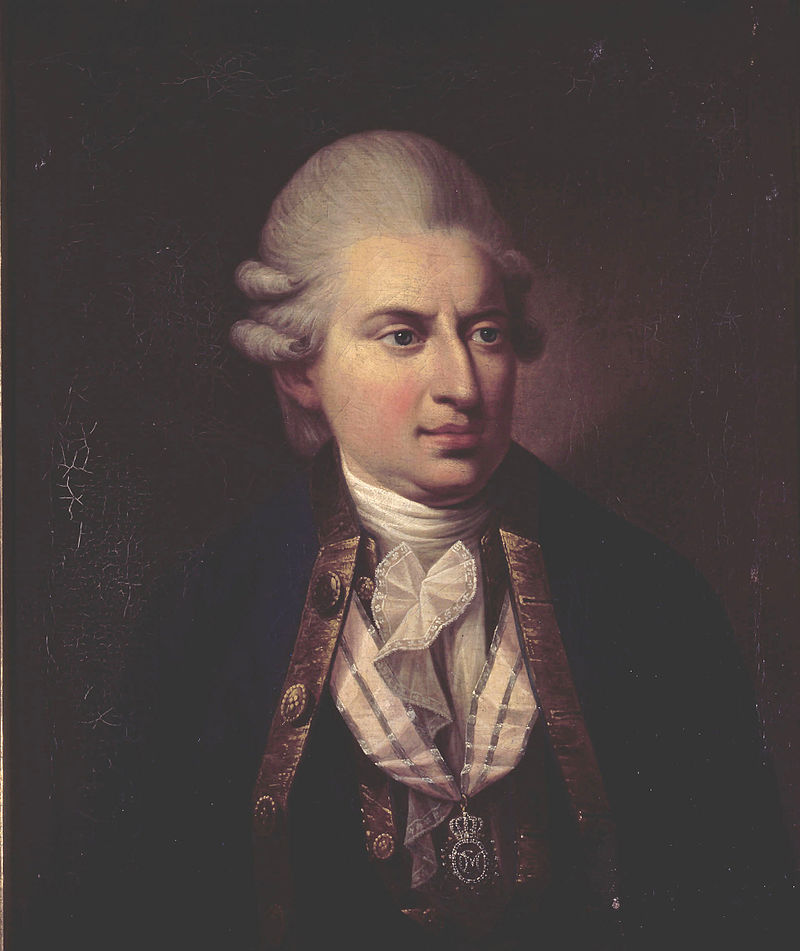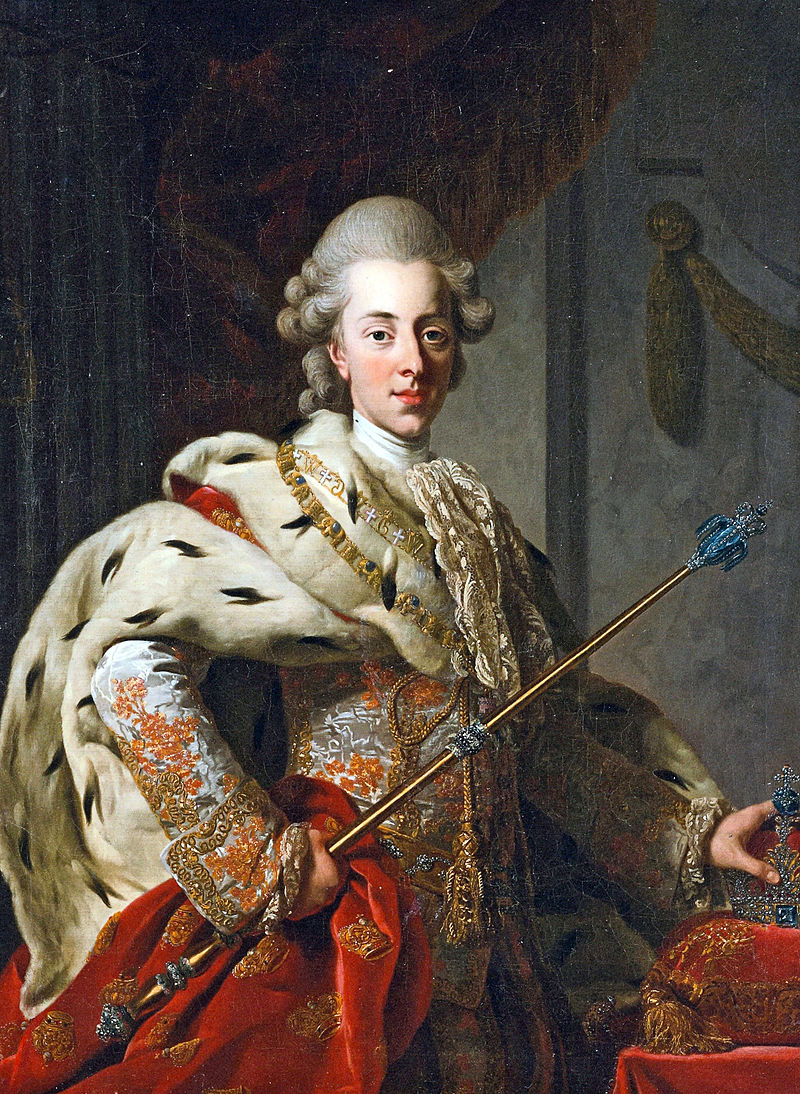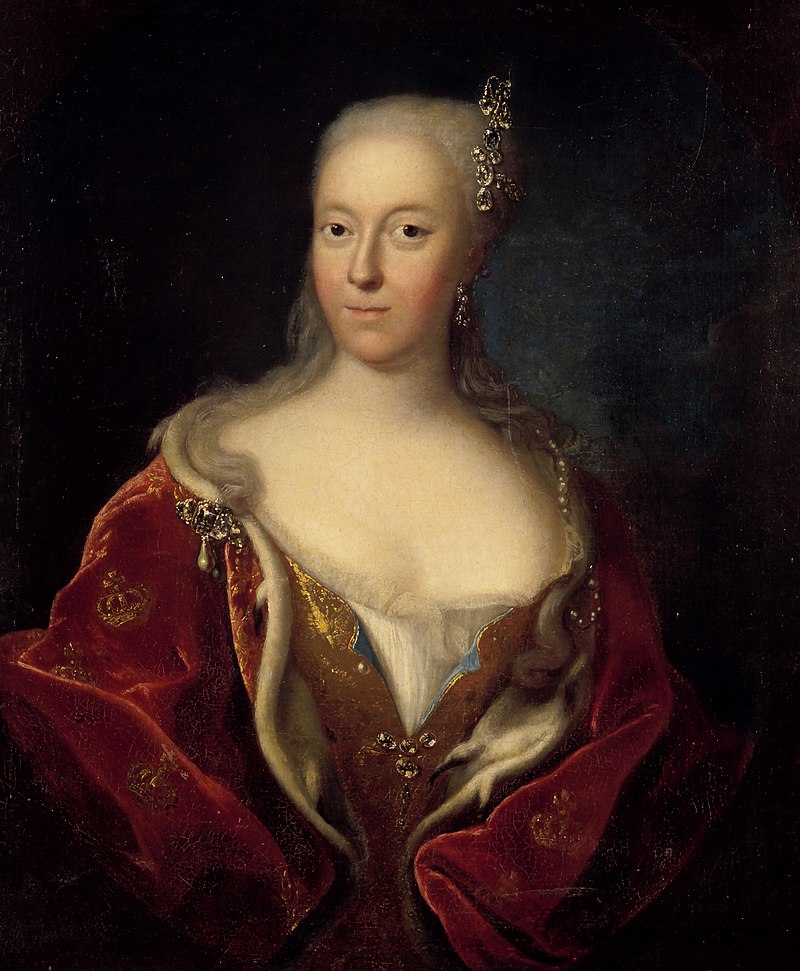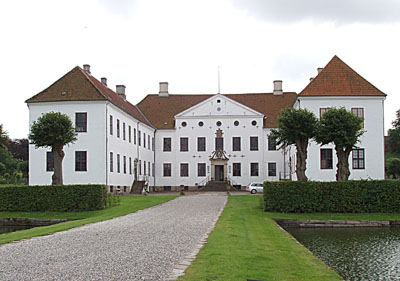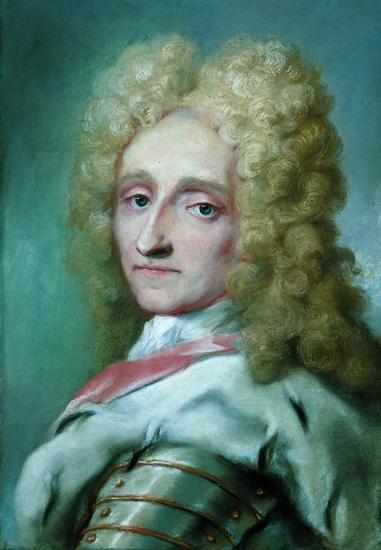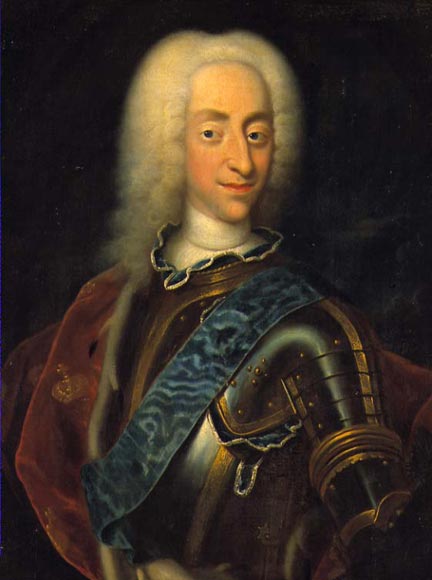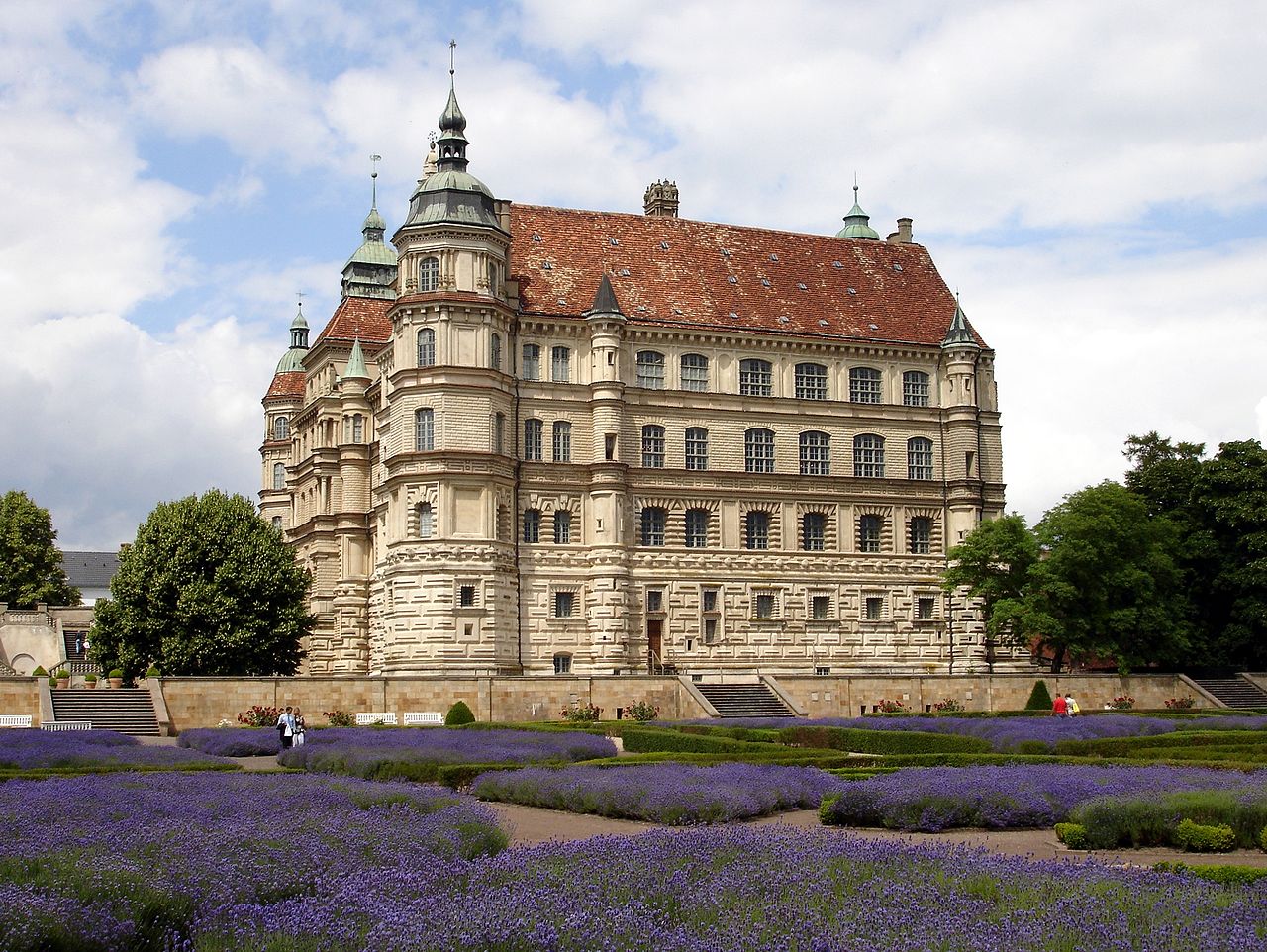by Susan Flantzer
© Unofficial Royalty 2021

Credit – Wikipedia
Dorothea of Brandenburg has the distinction of being married to two kings: Christopher III, King of Denmark, Norway, and Sweden and his successor Christian I, King of Denmark, Norway, and Sweden, the first monarch of the House of Oldenburg which reigned in Denmark until 1863. Dorothea was born in 1430 or 1431 in the Margraviate of Brandenburg-Kulmbach, now in the German state of Bavaria. She was the youngest of the three daughters and the youngest of the four children of Johann IV, Margrave of Brandenburg-Kulmburg (1406 – 1464) and Barbara of Saxe-Wittenberg (1405–1465).
Dorothea had three elder siblings:
- Barbara of Brandenburg (1423 – 1481), married Ludovico III Gonzaga, Marquis of Mantua, had fourteen children
- Rudolf of Brandenburg (born and died in 1424), died in infancy
- Elisabeth of Brandenburg (1425 – 1465), married (1) Joachim, Duke of Pomerania-Stettin, had one son (2) Wartislaw X, Duke of Pomerania-Rügen, had two sons
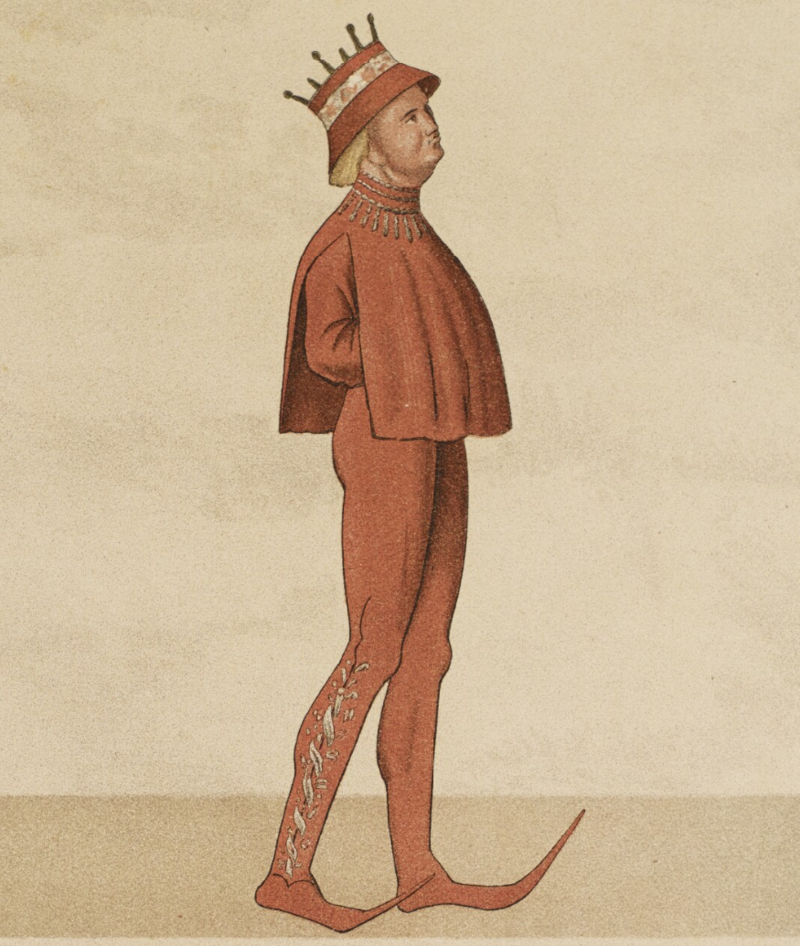
Dorothea’s first husband Christopher III, King of Denmark, Norway, and Sweden; Credit – Wikipedia
On September 12, 1445, 15-year-old Dorothea married 29-year-old Christopher III, King of Denmark, Norway, and Sweden. Two days later, Dorothea was crowned Queen of Denmark, Norway, and Sweden. The marriage lasted less than three years. In January 1448, 31-year-old King Christopher suddenly died without an heir. Dorothea was proclaimed the regent of Denmark until a new monarch could be elected.

Dorothea’s second husband Christian I, King of Denmark, Norway, and Sweden; Credit – Wikipedia
In June 1448, Karl Knutsson, Lord High Constable of Sweden, was elected King of Sweden and reigned as Karl VIII. He was elected King of Norway the following year. In September 1448, Christian of Oldenburg was elected King of Denmark and reigned as King Christian I. The Danish Council of State made it a condition that Christian should marry Dorothea of Brandenburg, his predecessor’s widow. Christian and Dorothea were married on October 26, 1449, and two days later, their coronation was held. Eventually, Christian I also became King of Norway and King of Sweden. In 1460, upon the death of his maternal uncle, Christian I inherited the Duchy of Holstein and Duchy of Schleswig.
Christian I and Dorothea had five children. Their two surviving sons both became kings and their only daughter became a queen consort.
- Oluf of Denmark (1450 – 1451), died in infancy
- Knud of Denmark (1451 – 1455), died in childhood
- Hans, King of Denmark, Norway, and Sweden (1455 – 1513), married Christina of Saxony, had six children, including King Christian II
- Margaret of Denmark, Queen of Scots (1456 – 1486), married James III, King of Scots, had three children including James IV, King of Scots
- Frederik I, King of Denmark and Norway (1471 – 1533), married (1) Anna of Brandenburg, had two children including King Christian III (2) Sophie of Pomerania, had six children
Dorothea had a great influence on her husband and was the regent of his kingdoms when he was away. Her careful frugality helped to pay off the debts that Christian had accrued. In gratitude, Christian handed over the Duchy of Holstein and Duchy of Schleswig to her fiefdom.
At this time, before the Reformation, Denmark, Norway, and Sweden were still Roman Catholic and Dorothea was a great patron of the church. She supported the Franciscan Observants and built a monastery for them in Køge, Denmark. Dorothea oversaw the construction of the Chapel of the Magi, also known as Christian I’s Chapel, at Roskilde Cathedral where Christian I and Dorothea were interred. In 1474 – 1475, Christian I and Dorothea made a pilgrimage to Rome where they were received by Pope Sixtus IV. As a widow, Dorothea made another pilgrimage to Rome in 1488.
King Christian I of Denmark died, aged 55, at Copenhagen Castle in Copenhagen, Denmark on May 21, 1481. He was buried in the Chapel of the Magi at Roskilde Cathedral. After Christian’s death, Dorothea preferred to live at Kalundborg Castle (link in Danish) which is now in ruins.
Christian I was succeeded by his elder son Hans. Until her death, Dorothea remained politically active during Hans’ reign. She granted the Duchies of Schleswig and Holstein to her younger son Frederik but it caused a conflict with her elder son, culminating in the two sons jointly reigning the duchies.

Roskilde Cathedral; Photo Credit – Susan Flantzer
On November 10, 1495, Queen Dorothea died at Kalundborg Castle in Kalundborg, Denmark, aged 65. She was buried with her husband King Christian I in the Chapel of the Magi at Roskilde Cathedral, the traditional burial site of the Danish royal family, in Roskilde, Denmark. While the tombs of King Christian III, King Frederik II, and their queen consorts are in the Chapel of the Magi, the graves of King Christian I and Queen Dorothea are marked with simple stones because the chapel itself was to be considered their memorial monument.

Grave of King Christian I and Queen Dorothea – Photo Credit – Susan Flantzer
This article is the intellectual property of Unofficial Royalty and is NOT TO BE COPIED, EDITED, OR POSTED IN ANY FORM ON ANOTHER WEBSITE under any circumstances. It is permissible to use a link that directs to Unofficial Royalty.
Kingdom of Denmark Resources at Unofficial Royalty
- Kingdom of Denmark Index
- Danish Orders and Honours
- Danish Royal Burial Sites: House of Oldenburg, 1448 – 1863
- Danish Royal Burial Sites: House of Schleswig-Holstein-Sonderburg-Glücksburg, 1863 – present
- Danish Royal Christenings
- Danish Royal Dates
- Danish Royal Residences
- Danish Royal Weddings
- Line of Succession to the Danish Throne
- Profiles of the Danish Royal Family
Works Cited
- Da.wikipedia.org. 2020. Dorothea Af Brandenburg. [online] Available at: <https://da.wikipedia.org/wiki/Dorothea_af_Brandenburg> [Accessed 20 December 2020].
- En.wikipedia.org. 2020. Dorothea Of Brandenburg. [online] Available at: <https://en.wikipedia.org/wiki/Dorothea_of_Brandenburg> [Accessed 20 December 2020].
- Flantzer, Susan. 2020. Christian I, King of Denmark, Norway, and Sweden. [online] Available at: <https://www.unofficialroyalty.com/christian-i-king-of-denmark-norway-and-sweden/> [Accessed 20 December 2020]
- Ru.wikipedia.org. 2020. Доротея Бранденбургская. [online] Available at: <https://ru.wikipedia.org/wiki/%D0%94%D0%BE%D1%80%D0%BE%D1%82%D0%B5%D1%8F_%D0%91%D1%80%D0%B0%D0%BD%D0%B4%D0%B5%D0%BD%D0%B1%D1%83%D1%80%D0%B3%D1%81%D0%BA%D0%B0%D1%8F> [Accessed 20 December 2020].











